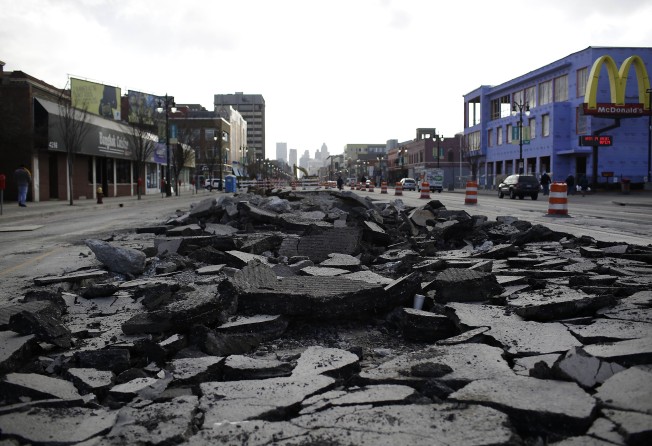Will China see a Detroit in its future?
It may be China’s good fortune to have come of age in the hypercompetitive globalized era. This has forced a brutal efficiency from early on

As a college student, I lived in Pittsburgh, the once-great Pennsylvanian industrial city where Andrew Carnegie made billions in steel, coal and other heavy industries. One afternoon a friend and I snuck into an abandoned, decaying steel mill to share a bottle of wine against the eerie backdrop of its dramatic ruins. As the wine slowly went to our heads, we gaped at the enormity of the losses.
A steel mill is like a city in and of itself; it can feel as sprawling and daunting as the Acropolis. To see this monument to modern industry overgrown with weeds and vines seemed a rebuke to the American Dream.
Back then the decline of Big Steel was blamed mostly on Japan, a country which now has its own scattered pockets of abandoned industry. Today China is the factory of the world, and it is already in the process of shutting down steel mills, even as it revs up production in other industries, such as autos.
When one looks to its future, it is hard not to wonder whether China will ever have a Pittsburgh – or even worse, a Detroit. For while Pittsburgh reinvented itself over time, Detroit did not.
The Norwegian memoirist Karl Ove Knausgaard recently visited Detroit, and described it this way:
“I’d seen poverty before, of course, even incomprehensible poverty, as in the slums outside Maputo, in Mozambique. But I’d never seen anything like this. If what I’d seen tonight—house after house after house abandoned, deserted, decaying as if there’d been a disaster—if this was poverty, then it must be a new kind of poverty, maybe in the same way that the wealth that had amassed here in the 20th century had been a new kind of wealth.”
Knausgaard is right, that’s exactly what it was - a new kind of broad-based wealth created by mass-scale production. The economist Edward Glaeser, in his book The Triumph of the Cities, explained the Detroit story this way: “By turning a human being into a cog in a vast industrial enterprise, [Henry] Ford made it possible to be highly productive without having to know all that much.”
In the short term, workers could prosper as cogs, driving hard bargains for a bigger cut of the profits because it was obvious that millions of dollars had been invested in the machinery, that these cornered capitalists couldn’t just up and leave Detroit. The downside, argues Glaeser, is that in the long run these companies did gradually disinvest to escape high wage bills.
Detroit’s downfall was also a product of limited competition during the hey-day in US manufacturing. Many of the key industries (steel, autos, rubber) had virtual monopolies for at least a decade after World War II ended. Even in 1980, the big three US carmakers still had 75 per cent of the country’s market, according to a paper published this year, “Competitive Pressure and the Decline of the Rust Belt: A Macroeconomic Analysis.”
It may be China’s good fortune to have come of age in the hypercompetitive globalized era. This has forced a brutal efficiency from early on. Despite rising land and labour bills, the migration of manufacturing from China has been slow, even on the low end. Perhaps China will never have a Detroit.
On the downside, Chinese factory workers have never enjoyed the sort of comfortable middle-class existence that Detroit’s denizens once did.
Factory work is an escape from grinding poverty, but not a direct route to the middle classes. Shenzhen has the highest manufacturing minimum wage in the country at RMB 2,000 a month; but this does not bring the city’s factory workers even to the cusp of middle class status.
McKinsey & Co., for example, defines China’s “mass middle” as those with annual incomes ranging from Rmb60,000 to Rmb106,000, made up of “junior white-collar workers,” or “professionals in tertiary industries,” or “government employees.”
The West, and Japan, enjoyed a period where the working man could make it to the middle classes – a house, a car or two in the garage, a pension. China might never go through this stage. Which is fine if the country can figure out a way to funnel the rural masses straight from the farm to university, skipping the manufacturing phase.
If not, China’s middle class will remain urban, privileged – and stunted.